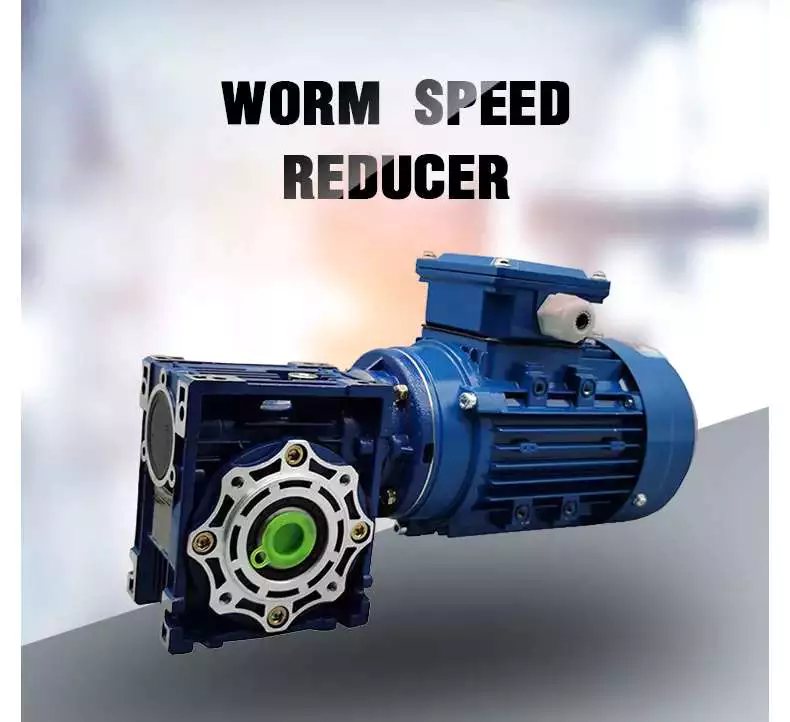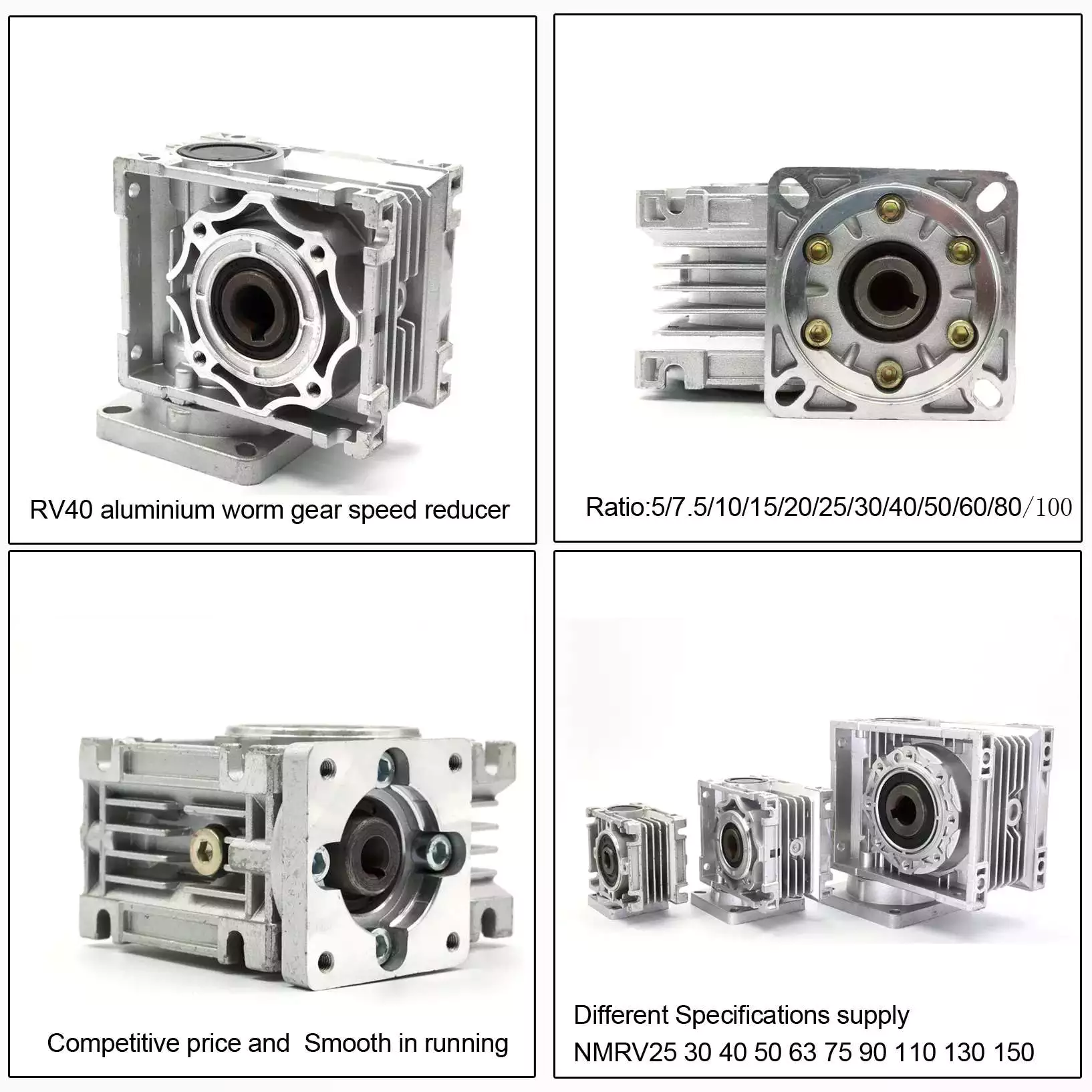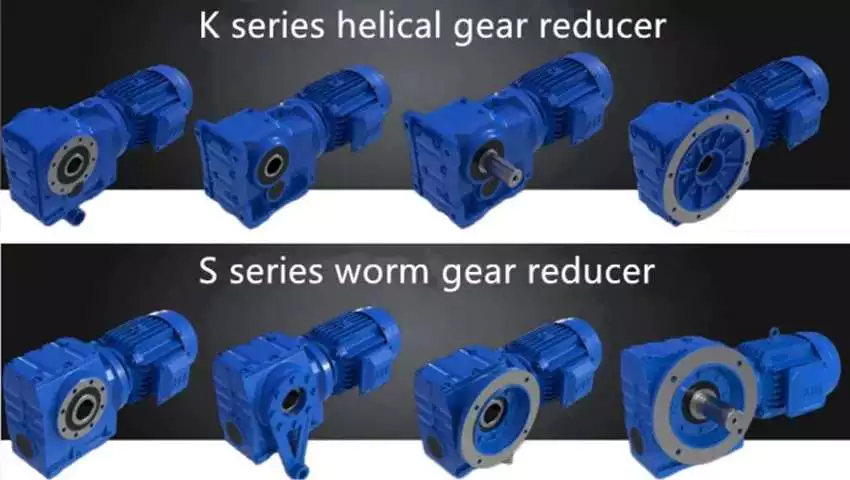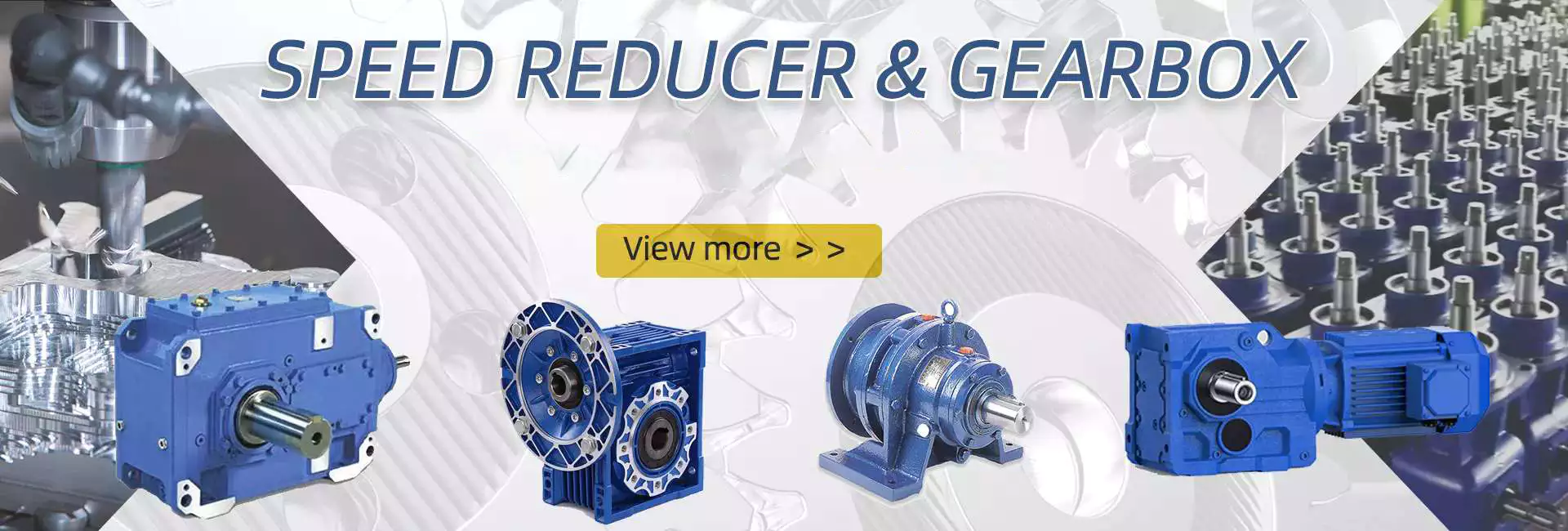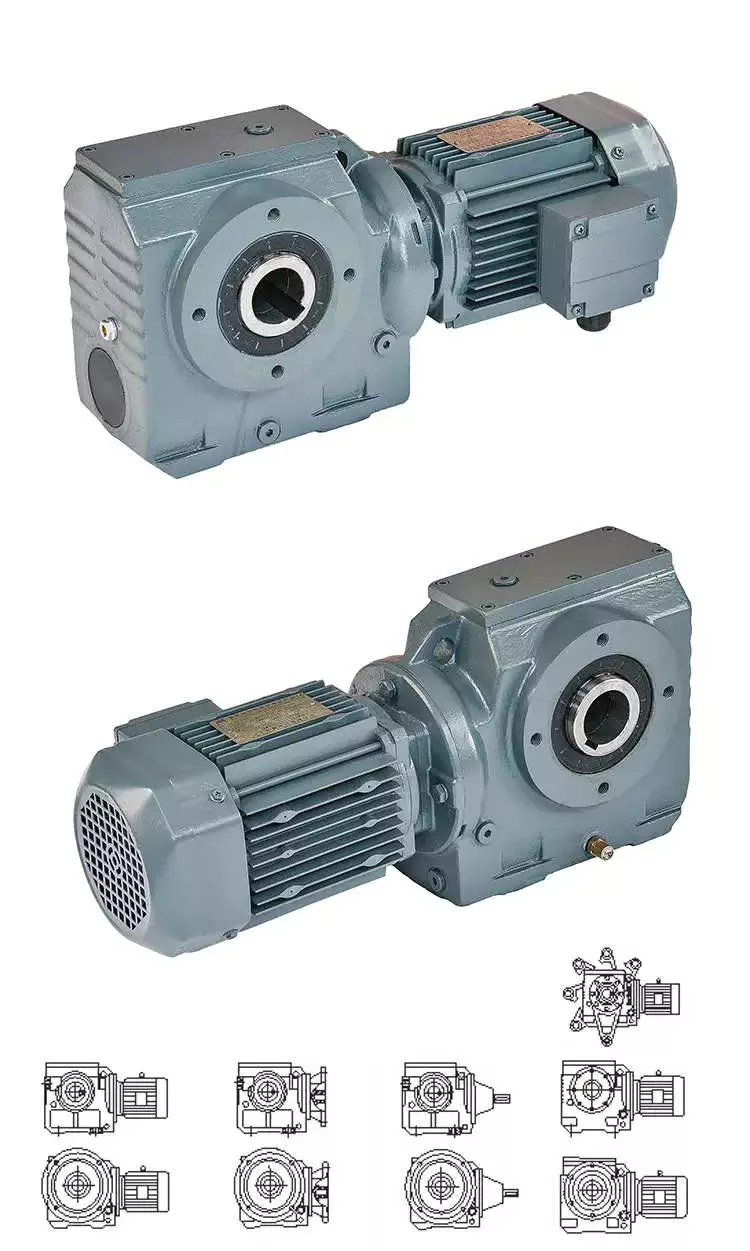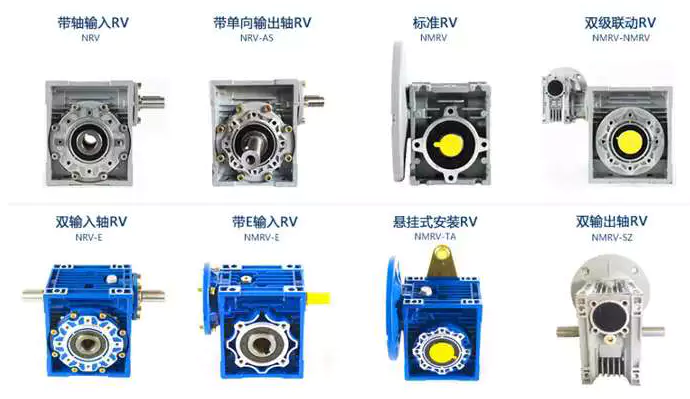Product Description
Product Description
Approach for product selected
Make sure you realize the following at 1st in purchase to choose the design of NMRV velocity reducer effectively:
– Loading problem.
– Velocity scope or ratio in software.
– Functioning issue and atmosphere.
– Installation area.
Outline doing work issue Coefficient K1 and revise coefficient K2.
– Make certain machinery load kinds A, B, C in accordance to desk 1.
– Get the working situation coefficient K1 from diagram 1 according to turning time (hour/day) and start
frequency (time/hour).
– Examine operating situation and decide on coefficient K2 from table 2.
Table 1 Machinery Load classification choice
Desk 2 Functioning issue coefficient K2
Merchandise Parameters
NMRV worm equipment motor
Certifications
Company Profile
HangZhou Welldone Transmission Equipment Co., Ltd. specializes in producing various kinds of little and medium-sized equipment, 3 period asynchronous motor, this kind of as DC motor, AC motor, reducer, planetary reducer, servo reducer, and so forth. We have specialist gear tester (equipment all-round inspection), CZPT hardness tester, Rockwell hardness tester (examination hardness once again to ensure use resistance), radial runout detection (detect motor managing in and balance, so that the motor can decrease put on and no sound during higher-pace procedure), endure voltage tester (detect leakage, higher than standard voltage, no leakage), inter flip tester, surge examination motor stator winding change to flip insulation, thickened coil, same energy torque output, torque is better.
The “Welldone” gear reducer created by our firm sells well in provinces, municipalities and autonomous locations of the country. It is broadly used in metallurgy, mining, lifting, transportation, petroleum, chemical, textile, pharmaceutical, food, light-weight industry, grain, oil, feed and other industries, and is deeply trustworthy by clients.
Welcome new and previous customers to pay a visit to and manual.
FAQ
Q: How to choose a suited motor or gearbox?
A: If you have motor images or drawings to display us, or you have thorough specs, such as, voltage, pace, torque, motor size, doing work mode of the motor, required lifetime and noise stage and so forth, make sure you do not hesitate to permit us know, then we can advise ideal motor per your ask for accordingly.
Q: Do you have a custom-made services for your common motors or gearboxes?
A: Of course, we can customise per your request for the voltage, pace, torque and shaft dimensions.
Q: What is your lead time?
A: Generally talking, our standard standard product will need to have 2-7days, a little bit lengthier for personalized goods. It will depend on the specific orders.
Q: What information should be presented, if I acquire motors from you?
A: Rated power, gearbox ratio, input speed, mounting placement. A lot more specifics, much better!
Q: How about your packing?
A: Carton, Plywood scenario. If you want much more, we can pack all merchandise in pallets.
Simply click below for deep communication.
Major Products
| Using situation | Example | Load type |
| Uniform load | Convey band (uniform conveying) | A(Uniform load) |
| Moderate Load | Speed changed conveying | B(Moderate load) |
| Severe Load | Compressor, pulverizer, etc | C(Severe load) |
###
| Ambient temperature | Working condtion coefficient K2 |
| -10C~30C | 1 |
| 30C-40C | 1.1~1.2 |
###
| Model | RV Model | RV Properties | Motor Model | Motor Properties | Attention |
| RV075 with 2.2KW | NMRV075 | L:198.5 | 2.2KW | Y100 | Need to determine hollow or solid |
| RV090 with 2.2KW | NMRV090 | L:232.5 | 2.2KW | Y100 | |
| RV063 with 1.5KW | NMRV063 | L:167 | 1.5KW | Y90L | |
| RV075 with 1.5KW | NMRV075 | L:198.5 | 1.5KW | Y90L | |
| RV090 with 1.5KW | NMRV090 | L:232.5 | 1.5KW | Y90L | |
| RV063 with 1.1KW | NMRV063 | L:167 | 1.1KW | Y90S | |
| RV075 with 1.1KW | NMRV075 | L:198.5 | 1.1KW | Y90S | |
| RV090 with 1.1KW | NMRV090 | L:232.5 | 1.1KW | Y90S | |
| RV050 with 0.75KW | NMRV050 | L:140 | 0.75KW | Y80 | |
| RV063 with 0.75KW | NMRV063 | L:167 | 0.75KW | Y80 | |
| RV075 with 0.75KW | NMRV075 | L:198.5 | 0.75KW | Y80 | |
| RV090 with 0.75KW | NMRV090 | L:232.5 | 0.75KW | Y80 |
| Using situation | Example | Load type |
| Uniform load | Convey band (uniform conveying) | A(Uniform load) |
| Moderate Load | Speed changed conveying | B(Moderate load) |
| Severe Load | Compressor, pulverizer, etc | C(Severe load) |
###
| Ambient temperature | Working condtion coefficient K2 |
| -10C~30C | 1 |
| 30C-40C | 1.1~1.2 |
###
| Model | RV Model | RV Properties | Motor Model | Motor Properties | Attention |
| RV075 with 2.2KW | NMRV075 | L:198.5 | 2.2KW | Y100 | Need to determine hollow or solid |
| RV090 with 2.2KW | NMRV090 | L:232.5 | 2.2KW | Y100 | |
| RV063 with 1.5KW | NMRV063 | L:167 | 1.5KW | Y90L | |
| RV075 with 1.5KW | NMRV075 | L:198.5 | 1.5KW | Y90L | |
| RV090 with 1.5KW | NMRV090 | L:232.5 | 1.5KW | Y90L | |
| RV063 with 1.1KW | NMRV063 | L:167 | 1.1KW | Y90S | |
| RV075 with 1.1KW | NMRV075 | L:198.5 | 1.1KW | Y90S | |
| RV090 with 1.1KW | NMRV090 | L:232.5 | 1.1KW | Y90S | |
| RV050 with 0.75KW | NMRV050 | L:140 | 0.75KW | Y80 | |
| RV063 with 0.75KW | NMRV063 | L:167 | 0.75KW | Y80 | |
| RV075 with 0.75KW | NMRV075 | L:198.5 | 0.75KW | Y80 | |
| RV090 with 0.75KW | NMRV090 | L:232.5 | 0.75KW | Y80 |
Worm Reducer
Worm reducers are commonly used to reduce the Agknx produced by a rotating shaft. They can achieve reduction ratios of five to sixty. In contrast, a single-stage hypoid gear can achieve up to a 120:1 reduction ratio. For further reduction, another type of gearing is used. So, a single stage worm reducer cannot achieve higher ratios than these.<br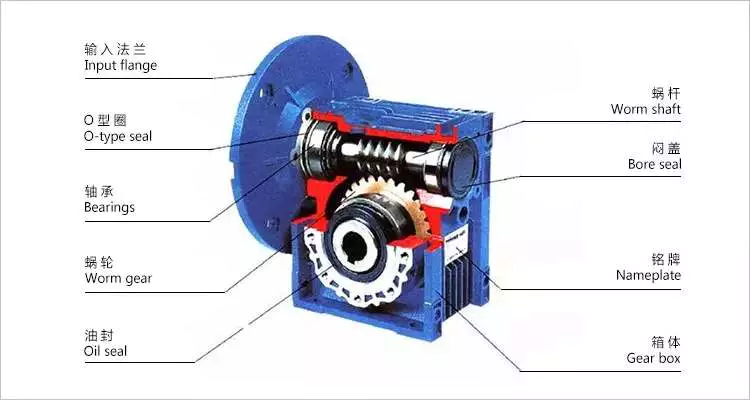
Mechanics
A worm reducer is an auxiliary mechanical device that uses worms to reduce the size of a rotating shaft. These worms have a range of tooth forms. One form is a line weave twist surface. Another is a trapezoid based on a central cross section. The trapezoid can be perpendicular to the tooth cross section, or it can be normal to the root cross section. Other forms include involute helicoids and convolute worms, which use a straight line intersecting the involute generating line.
Worm gears are lubricated with a special lubricant. Because worm gears are complex, it’s important to use the correct lubricant. Worm gear manufacturers provide approved lubricants for their gears. Using unapproved gear oil can damage your reducer’s efficiency. The right lubricant depends on several factors, including load, speed, duty cycle, and expected operating temperatures.
The efficiency of a worm gear reducer depends on several factors, including losses at gear mesh, losses in the bearings, and windage in the oil seal lip. In addition, the worm gear reducer’s efficiency varies with ambient temperature and operating temperature. The worm gear reducer’s efficiency can also vary with the ratio of the load. Moreover, worm gear reducers are subject to break-in.
Worm gear reducers are used in many different applications. They are typically used in small electric motors, but they’re also used in conveyor systems, presses, elevators, and mining applications. Worm gears are also commonly found in stringed musical instruments.
Worm gears have excellent reduction ratios and high Agknx multiplication, and they’re often used as speed reducers in low to medium-speed applications. However, the efficiency of worm gear reducers decreases with increasing ratios.
Sizes
Worm reducers come in different sizes and tooth shapes. While the tooth shape of one worm is similar to the other, different worms are designed to carry a different amount of load. For example, a circular arc worm may have a different tooth shape than one with a secondary curve. Worm gears can also be adjusted for backlash. The backlash is the difference between the advancing and receding arc.
There are two sizes of worm reducers available from Agknx Transmission. The SW-1 and SW-5 models offer ratios of 3.5:1 to 60:1 and 5:1 to 100:1 respectively. The size of the worm reducer is determined by the required gear ratio.
Worm gears have different thread counts. One is based on the central cross-section of the worm, and the other is on the right. Worm gears can have either a single or double thread. Single-threaded gears will reduce speed by 50 percent, while double-threaded gears will reduce speed by 25 percent.
Worm gear reducers are lightweight and highly reliable. They can accommodate a variety of NEMA input flanges and hollow output bore sizes. Worm reducers can be found at 6 regional warehouses, with prepaid freight. To make a purchasing decision, you should consider the horsepower and Agknx requirements of your specific application.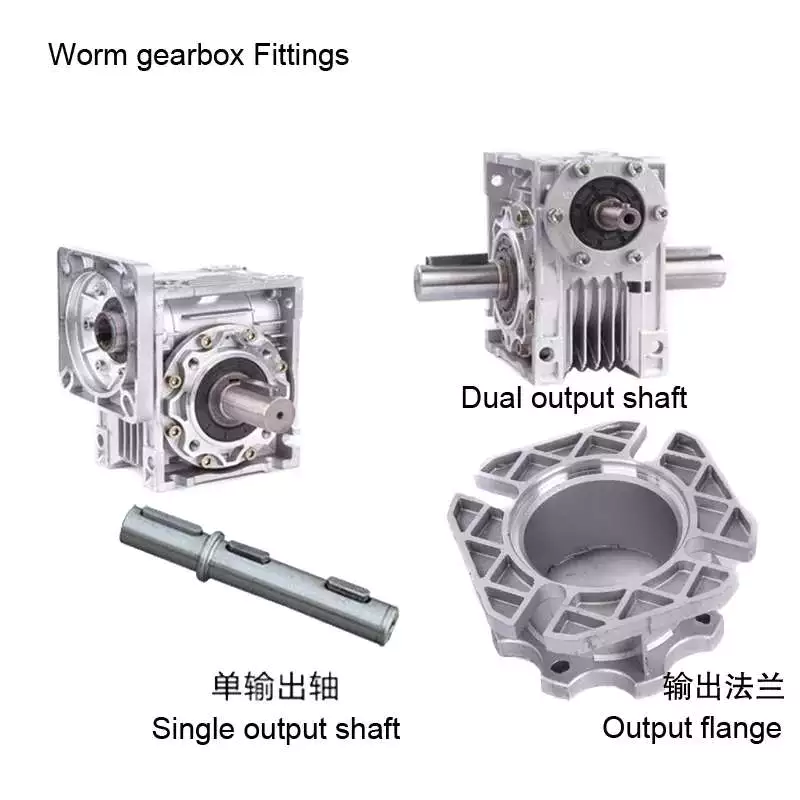
Applications
The Worm Reducer market is a global business that is dominated by the North American and European regions. The report provides in-depth information on the market trends, key challenges, and opportunities. It also examines the current state of the industry and projects future market growth. The report is organized into segments based on product type, major geographical regions, and application. It also presents statistics and key data about the market.
Worm gear reducers have many applications. They can be used to increase the speed of convey belts. They also help reduce noise. Worm gears have many teeth that touch the gear mesh, which makes them quieter. Moreover, the worm gears require only a single stage reducer, reducing the number of moving parts in the system.
The worm gear has long life and is suitable for different industries. It is a perfect choice for elevators and other applications that need fast stopping and braking. Its compact size and ability to hold a load make it suitable for these applications. It also prevents the load from free-falling as a result of a sudden braking. Worm gears can also be used in heavy-duty machinery such as rock crushers.
Worm gears are similar to ordinary gears except that they transfer motion at a 90-degree angle. As a result, the worm gears are extremely quiet, making them a suitable option for noise sensitive applications. They are also excellent for low-voltage applications, where the noise is critical.
Worm gears are ideal for applications with space restrictions, because they require fewer gear sets. The worm gears also allow for a smaller gearbox size. Consequently, they are the perfect choice for machines that are space-constrained, such as conveyors and packaging equipment.
Cost
The lifespan of a worm gear reducer is comparable to other gear reducers. Worm gears have a long history of innovation and use in various industries, from shipbuilding to automobile manufacturing. Today, these gear reducers are still popular with engineers. However, there are some things to keep in mind before buying one.
In the first place, a worm reducer needs to be affordable. Generally, a worm reducer costs about $120. The price varies with the brand name and features. Some products are more expensive than others, so be sure to shop around for the best price. In addition, it is important to consider the quality and design of the worm reducer before making a purchase.
Worm gear manufacturers have made significant advancements in materials, design and manufacturing. These advancements, along with the use of advanced lubricants, have resulted in significant increases in efficiency. For example, double enveloping worm gear reducers have improved efficiency by three to eight percentage points. This improvement was achieved through rigorous testing of manufacturing processes and materials. With these improvements, worm gear reducers have become more desirable in today’s market.
Worm reducers are extremely versatile and reliable, and are available in a variety of sizes. Domestic manufacturers usually stock a large selection of reducers, and are often able to ship them the same day you place your order. Most major domestic worm gear reducer manufacturers also share some critical mounting dimensions, such as the output shaft diameter, the mounting hole location, and the overall reducer housing height. Most manufacturers also offer standardized gear ratios. Some manufacturers have also improved gear design and added synthetic lubricants for better performance.
In addition, different tooth shapes of worms can increase their load carrying capacity. They can be used on secondary curves and circular arc cross sections. Moreover, the pitch point defines the boundary of the cross section. The mesh on the receding arc is smoother than that of the advancing arc. However, in the case of negative shifting, most of the mesh is on the receding arc.
Self-locking function
A worm reducer has a self-locking function. When a worm is fitted with all of its addendum teeth, the total number of teeth in the system should be greater than 40. This self-locking function is achieved through the worm’s rack and pinion mechanism. The worm’s self-locking feature can prevent the load from being dropped and is useful for many applications.
The self-locking function of a worm reducer is possible for two main reasons. First of all, a worm reducer uses two or more gears. One gear is placed at the input, and the other gear runs the output shaft. This mechanism produces a torque, which is transmitted to a spur gear.
Worm reducers can be used in a variety of industrial applications. Because of their self-locking function, they are useful for preventing back-driving. They are also helpful for lifting and holding loads. Their self-locking mechanism allows for a large gear reduction ratio without increasing the size of a gear box.
Self-locking gears can be used to prevent back-driving and inertial driving. This is useful for many industries and can prevent backdriving. However, one major disadvantage of self-locking gears is their sensitivity to operating conditions. Lubrication, vibration, and misalignment can affect their reliability.
Embodiments of the invention provide a self-locking mechanism that prevents back-driving but allows forward-driving. The self-locking mechanism may comprise first and second ratchet cams disposed about a gear member. A releasable coupling member may be interposed between the gear member and the ratchet cam. This facilitates selective coupling and decoupling.
The worm reducer has several advantages. Its compact design is ideal for many mechanical transmission systems. It also provides greater load capacity than a cross-axis helical gear mechanism.


